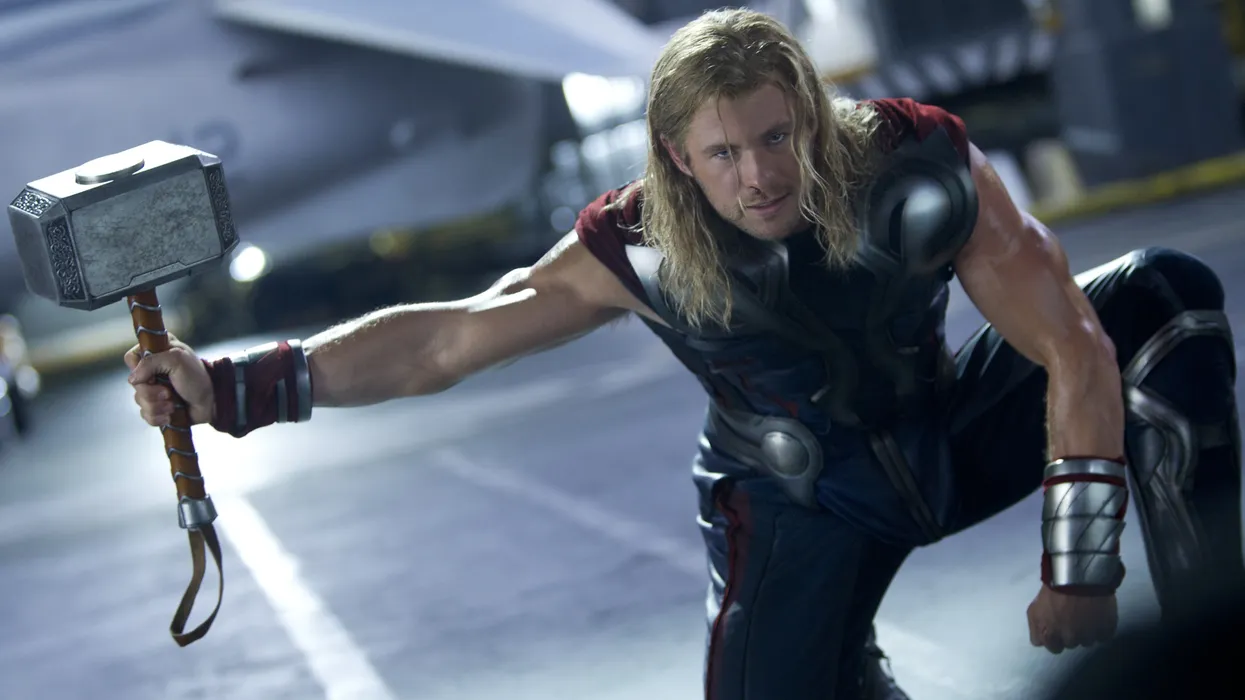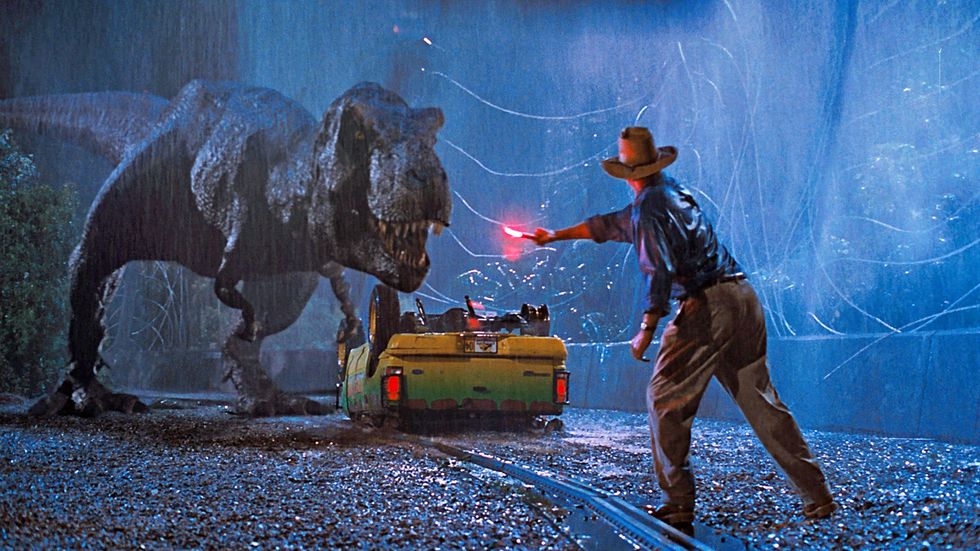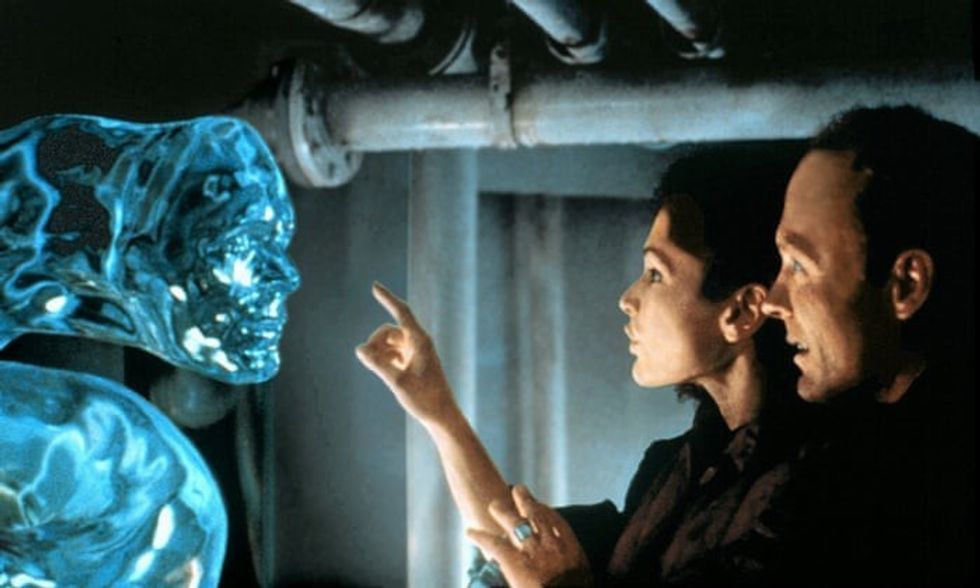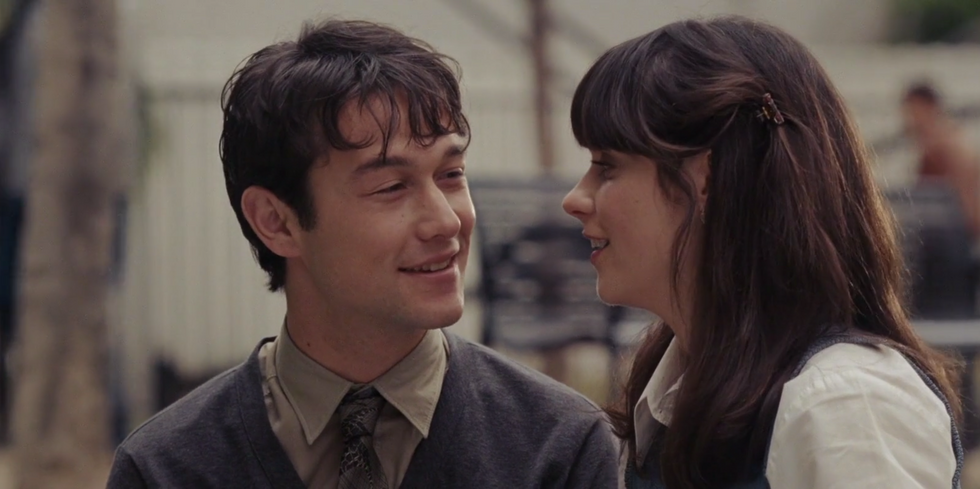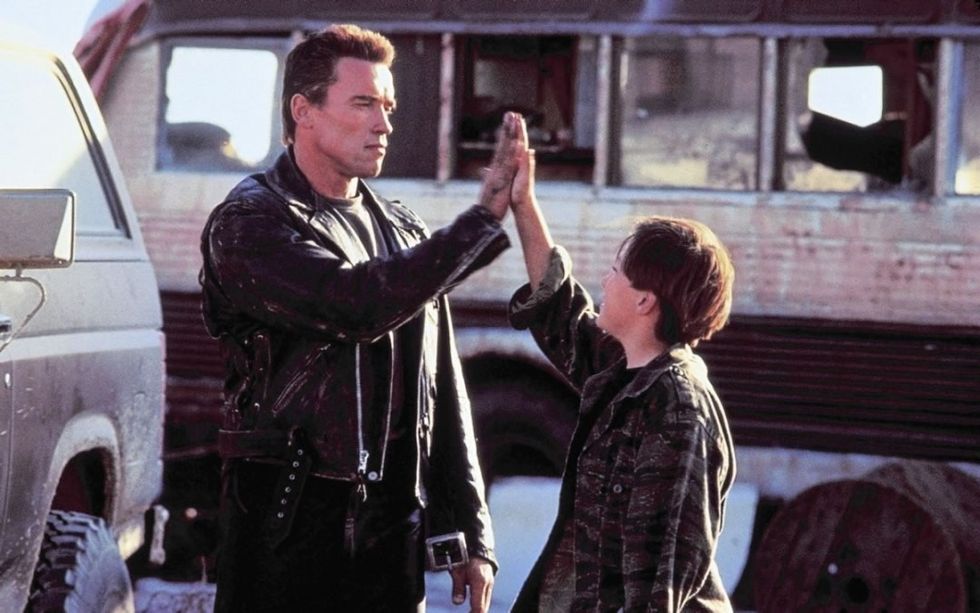Create In-Camera VFX the Old Fashioned (But Awesome) Way, Through Front Screen Projection

The most iconic use of front screen projection is probably when it was used for Stanley Kubrick's "Dawn of Man" scene in 2001: A Space Odyssey in the late 1960s (as well as in his fake moon landing -- allegedly), but the process was utilized as recently as 2013 by cinematographer Claudio Miranda for Oblivion. So, sure -- it's a little antiquated, and there are probably easier ways to go about creating backgrounds for projects. But, as Shanks points out, front screen projection gives your shots a focus depth that "you could never achieve if filmed on location."
Shanks walks us through the whole process, from what materials you'll need to where to place it. He uses a Scotchlite reflective fabric for the background that reflects 95% of the light back to the source, which allows you to light your subject without affecting your background. He also uses a projector (naturally) and a one-way mirror set at a 45 degree angle to film through. There are a few important techniques, like placement and angling of the camera and projector, so check out the tutorial below to get a better idea on how to pull this off.
And here's the behind-the-scenes:
Have you ever used front screen projection before? Do you have any tips on how to achieve the effect? Let us know in the comments.
